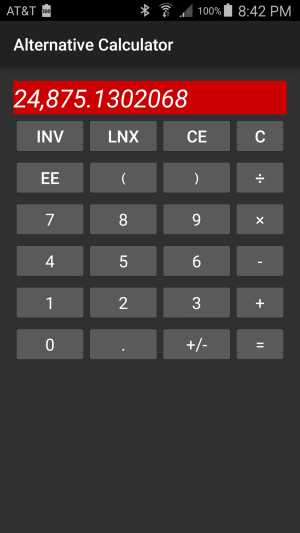“Star Wars: The Force Awakens” has by any measure you want to apply been an incredible financial success. As of today, 30 December, it’s crossed the $600M gross receipts mark, breaking yet another record time-wise in its unstoppable (it would appear) race to $1B and beyond. Everywhere you look, everyone is gushing over how Star Wars has boosted not only its own sales, but the overall North American box office gross receipts to $11B+ for the year.
If I’m lucky I hopefully won’t add to the growing pile of cash surrounding this Star Wars movie.
I have for decades taken a dismal view of the entire Hollywood Industrial Complex. I can’t remember how far back my dark view goes, but it was kicked into high gear with the passage of the Digital Millennium Copyright Act in 1998, which essentially made making copies, any copies, felonious behavior, by the “dissemination” of means and methods for breaking digital rights management, or DRM. It went so far to criminalize the mere act, even if no actual infringement (especially for profit) takes place. And that was used to lard up digital systems with hardware and software in our electronic devices to enforce it.
This incredibly invasive law and the incredibly abusive system that that has grown up to enforce it since then has motivated me to avoid just about everything the HIC can produce, from music to movies. The only thing I buy in any quantity anymore are dead-tree books, if for no other reason that they can’t be erased or recalled, unless the Firemen come to claim my books.
It further inflames my passions against the HIC when I read all the stories trumpeting 2015’s record ticket sales of just over $11B. And this isn’t the first year with such records. This year’s record breaks the last record set a mere two years ago in 2013 of $10.9B. So it’s not like a few record years in the midst of many poor years, like the US car industry for example. The HIC has been stepping from record to record each year, riding abusively and heavily on the backs of the US citizens, helped with the gross enforcement of the DMCA and other similar actions. When you see such a colluding, abusive marketplace, investigations usually take place and people get sued. But not the HIC. Instead, with their carefully bought legislative drones, they make billions, talking out of one side of their mouths about how wonderful it is, while at the same time talking out the other about how they’re being driven to the poor house by copyright abusers. The only real copyright abuse is with the HIC, who are masters at it. And so I do as little as possible, personally, to help put money into a system that abuses me in so many big and little ways. I don’t buy tickets, I don’t watch movies at the theaters if I can help it, and I don’t stream anymore (I streamed very little to start with), especially music.
I’ve a confession to make: when the first Star Wars movie was released in 1977 I saw it 24 times. That’s right, 24 times. That’s because the last good science fiction movie I saw with space ships was 1968’s “2001.” That period from 1968 to 1977 was a vast cinematic wasteland for me, so when the first Star Wars film was released I was incredibly motivated to see it as much as possible (it also helped that I was 23 at the time, a key age for such oddball behavior). I kept going back to tease out how the special effects were created (I was heavy into film still photography back then, and nursed the ambition of going into film making; we all know how that turned out). Key to supporting this behavior were ticket prices in 1977. I could afford it back then because tickets cost $2, dropping to $1, per showing. That is literally an order of magnitude less than today.
I’m not the only one not buying tickets. In spite of all the record breaking money made, the number of tickets sold has declined to levels not seen since 1996. That’s because the cost of tickets, driven by new gimmicks such as 3D and IMAX screens, has pushed single ticket sales well above $10 in just about every market across the country, especially for 2015’s Star Wars movie. Think about that for a moment. The number of tickets sold is at a level not seen since three years before the DMCA was passed. Number of tickets sold has been dropping steadily for years now, driven in part by a poor quality product as well as ever higher prices. Lest you think that this current Star Wars release is some artistic wonder, think again. There are many vocal critics who aren’t all that keen about the movie, such as this example at Forbes, and for many good reasons. The drive to see the movie is due in no small part to just how bad the last three movies were, not how good this one is. Remember that this movie was directed by JJ Abrams, the same auteur who gave us 2009’s Star Trek reboot.
While there are a few tongue-in-check movie reviews scattered around this blog, there are only a few. It seems like every time I break my vow of non-viewing I come away disappointed. I think I’ve finally learned my lesson; to avoid future disappointments and an appreciably lighter wallet, I’ll stay away. Not just from Star Wars, but all the other hyped science fiction films headed my way.



You must be logged in to post a comment.